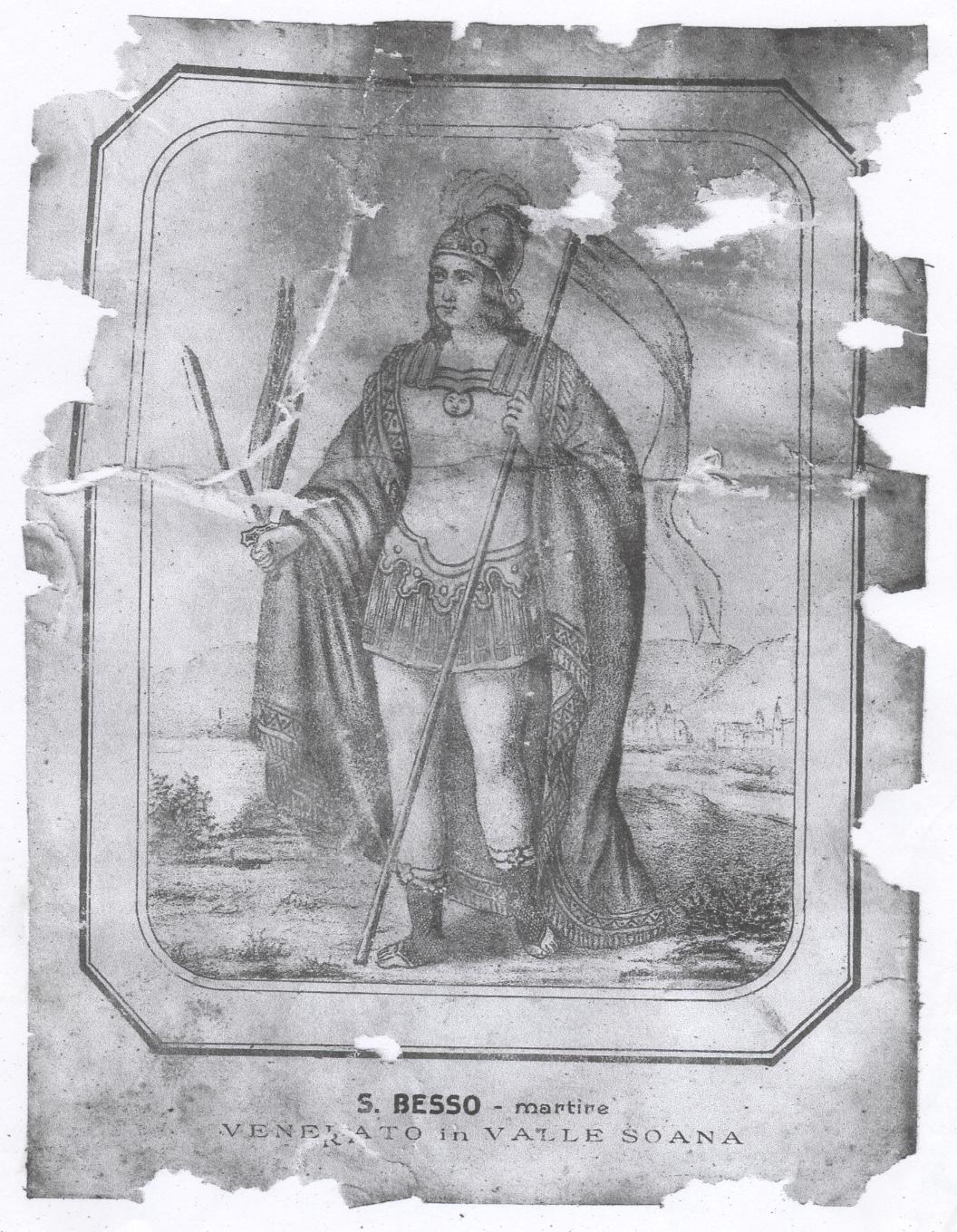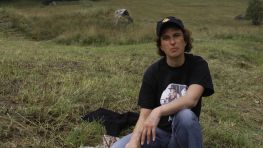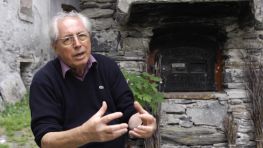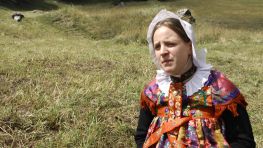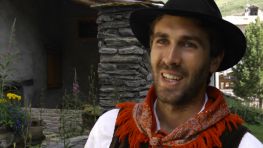 Vincent Bernard Roulph
Vincent Bernard Roulph Carmen Perret
St. Besse and the Cogneins' pilgrimage
In this interview conducted in 2012, Carmen Perret speaks of the pilgrimage to the shrine of St. Besse made by the 'cogneins' the inhabitants of Cogne, in Valle d'Aosta region.
The pilgrimage begins on the morning of August 9. It takes several hours and involves the passage of passes. Once at the shrine, the pilgrims say the rosary three times, walking around the cliff of St. Besse (also known as Monte Fauterio or Fautenio). This walk is currently carried out counterclockwise, unlike the procession with the statue on the following day, which takes place in a clockwise direction.
The three turns remembers the thee falls from the cliff St. Besse endured before he died. The third round ended with the ascension to the summit of Mount St. Besse. On top, next to a small sacred shrine there is an iron cross that is kissed by every pilgrim.
It is still alive the custom each pilgrim take home as a memory of the pilgrimage a piece of stone collected in the vicinity of the sanctuary.
Carmen Perret also certify the devotion to St. Besse is still very alive in Cogne, where the saint is worshipped as a protector of the community. There are some cogneins that still rely on the protection of St. Besse and then take part in the pilgrimage in a spirit of votive offerings and thanksgiving. Particularly rooted in the community of Cogne is the connection between St. Besse and the young conscripts who take part each year to the pilgrimage.
In Perret's account, it is specified the priest of Cogne, in contrast with his parishioners, usually does not participate in the pilgrimage. This absence is probably related to the interpretation by Paolo Giardelli of the vigil at the shrine of St. Besse: "the custom to arrive the day before and spend the night in the vicinity of the sanctuary, where the holy event has occurred and is manifested, is the desire to enjoy the benefits and healing powers radiated by the gods. (...) Healing practices that have nothing in common with Christianity "(Giardelli, 1997, p. 128).
At the end of her interview Carmen Perret tells the legend of St. Besse.
The testimony of this young woman Cogne is particularly interesting because it documents some conspicuous changes that the pilgrimage and devotion of cogneins have had over one hundred years. In particular, the three rounds of the mountain seems to have undergone a remarkable evolution. Originally they were nine, according to the testimony of the canonical Gérard reported by Hertz (1994, p. 208, n. 15). They changed the direction of the "tour" of the rock (Hertz 1994, p. 171; Giardelli, 1997, p. 130), that was, clockwise, whereas it is counterclockwise. Even the perception of Besso as a soldier-saint, a perception based on the iconography of the saint, seems to indicate a significant change compared to the legend collected by Hertz, who showed how "much more widespread among the simple people of Cogne" the legend that "St. Besso was a shepherd leading his flock to graze near Mount "(1994, p. 186).
Video table of contents
Interview information
Country: IT
Region: Piemonte
City: Valprato Soana
District: TO
Suburb: Campiglia
Locality: Santuario di San Besso
Altitude: 2019m s.l.m.
Wikipedia: http://it.wikipedia.org/wiki/Santuario_di_San_Besso
Urls: Robert Hertz, edizione on line di: Saint Besse. Étude d’un culte alpestre
Attached documents:
Attached images:
Carmen Perret
Date of birth: 12-20-1972
City: Aosta
Languages: Italiano
Bibliography:
Bertotto S. (1985), Tradition païenne et culte chrétien au sanctuaire de Saint-Bès, au Val Soana, in “Lo flambò - Le flambeau”, pp. 5-21.
Careggio A.M. (1995), La religiosità popolare in Valle d'Aosta. Il culto mariano e la devozione ai santi, Aosta, Tipografia Valdostana, pp. 157-160.
Giacosa P. (1925=1966), Cogne, Ivrea, Viassone; rist. anastatica Torino, Einaudi, pp. 53-64.
Giardelli P. (1997), Santi e diavoli. Le tradizioni popolari valdostane, Genova, Sagep, pp. 122-133, 152-153.
Hertz R. (1913=1994), Saint Besse. Étude d’un culte alpestre, in “Revue de l’histoire des religions”, LXVII, pp. 115-180; trad it. in R. Hertz, La preminenza della destra e altri saggi, a cura di A. Prosperi, Torino, Einaudi, pp. 165-216.
Sitography:
Document by: Gianpaolo Fassino
Video by: Luca Percivalle (con la collaborazione di Gianpaolo Fassino)
Created: 10-08-2012




